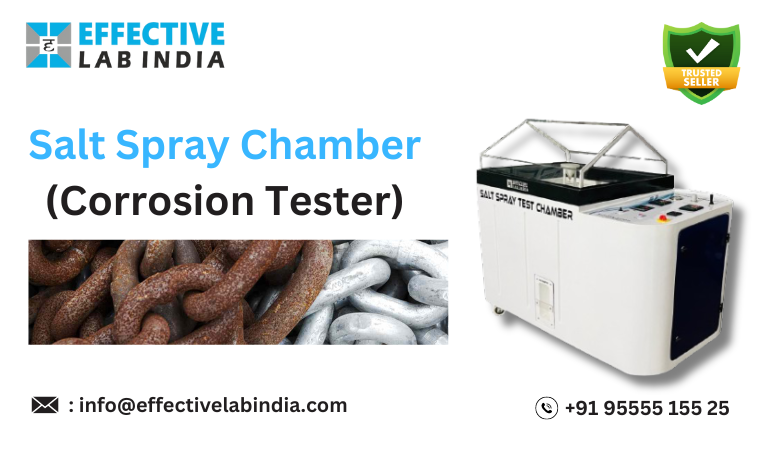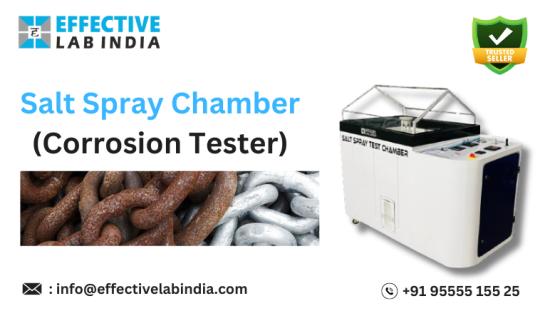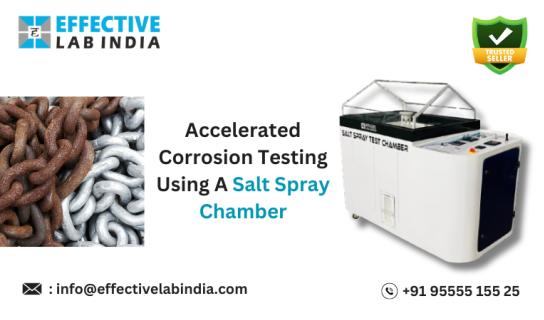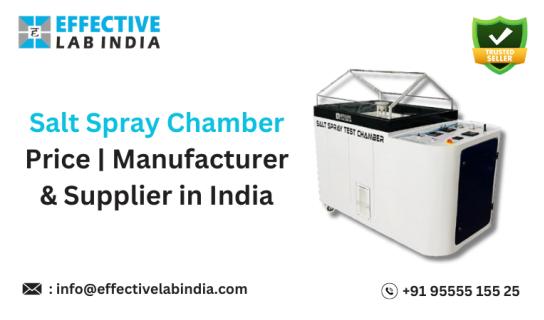A salt spray chamber is one effective tool in the corrosion test of metal among other materials, it is important for the durability and longevity of materials mainly metals; for this reason the salt spray chamber. This device simulates the corrosiveness of salt-laden environments therefore possible to know beforehand what will happen to any material after some time running.
Corrosion Testing
Early Methods
Corrosion testing is something that has been happening for hundreds of years; the early ways were not advanced at all; they were as basic as possible. They included leaving items outside in all types of weather conditions and then waiting to see what happened next; it took long because there was no way of knowing when things would get worse or improve.” Refactoring involves: “Converting AI-like texts into human-like ones and ensuring the version with lower perplexity but higher burstiness still has similar word count and HTML elements.
Evolution of Salt Spray Testing
In the early 20th century, the need for more reliable and faster methods made it necessary to develop the salt spray test. This standardized the exposure to a controlled salt-laden mist, making results more consistent and comparable.
How a Salt Spray Chamber Works
Basic Components
A standard salt spray chamber includes a sealed cabinet, a reservoir with a salt solution, a spraying nozzle, as well as a control system. It is made in such a way as to maintain the same humidity level and temperature so that the testing conditions can be uniform throughout.
Operating Principle
The principle of operation is simple; the spray nozzle atomizes a salt solution (often sodium chloride) into a fine mist which then settles on the test specimens. In relatively short periods, this ongoing exposure quickens the corrosion process and it exposes any potential weaknesses.
Types of Salt Spray Chambers
Traditional Salt Spray Chambers
These are salt spray test chambers which are the most common type and are designed for continuous exposure to a salt spray. They are characterized by simplicity of operation and are generally used for basic corrosion testing.
Cyclic Corrosion Chambers
To enhance the sustainability of the substance, some aspects are taken into consideration including the level of complexity that encompasses it but not limited to alternating between salt spray drying and humidity cycles as is the case with these advanced chambers. This way they can simulate more complex environmental conditions than if salt sprays were used consecutively then dry air or/and rain came along after some time elapses without any change in terms of temperature (Schönheit et al., 2016).
Applications of Salt Spray Testing
Automotive Industry
Essential to the automotive sector for evaluating corrosion resistance on vehicles’ exposed car bodies, undercarriages, and certain miscellaneous parts is the use of salt spray tests.
Aerospace Industry
At great altitudes and close to coastlines, aerospace components must contend with severe environmental conditions which include salt exposure, and salt spray tests being performed to ascertain if they adhere to strict longevity measures.
Electronics Industry
Electronic components may corrode even when they are not expected to, especially close to oceans where they are exposed to sea salt corrosion. Through testing, it is possible to ensure that connectors, housings, and other components operate well over time and environmental conditions, thus serving their intended purpose.
Standards and Regulations
ASTM B117
One of the most commonly used protocols for salt spray tests is the ASTM standard B117. The test that it describes includes such things as salt solution concentration, exposure time, and temperature.
ISO 9227
Just like ISO 9227, it makes available analogous guide paragraphs while assuring examination uniformity in a variety of nations.
Other Relevant Standards
To create thorough and pertinent testing guidelines, there are specialized benchmarks that suit various industries and materials
Preparing Samples for Testing
Sample Size and Shape
Test samples may vary in size and shape, but they have to correspond to the real product and lie in the chamber without reaching each other or walls of the chamber
Cleaning and Handling
To prevent any interference with the outcome, one must ensure there is proper cleaning and treatment involved. Normally, solvents are used to clean samples by removing oils as well as dust particles ahead of experiments.
Test Procedures
Setting Up the Chamber
filling the reservoir with the salt solution, setting the temperature and humidity control, and placing the samples inside involves setting up the chamber.
Running the Test
Once the chamber has been set up, then the test begins. The salt solution is sprayed on the samples by the spray nozzle continuously as the test progresses for its predetermined periods which usually take up to several days, and in some cases just a few hours.
Monitoring and Recording Data
During the testing stage, the site collects data on variables such as temperature, and humidity among others. To identify that the chamber is working properly and that the conditions have not changed, checks take place regularly.
Interpreting Test Results
Visual Inspection
Once the test is over samples from this test should be visually scattered to establish if there is any corrosion that is observed through rusting, pitting, or blistering with the extent being recorded in terms of kind.
Quantitative Analysis
Ancillary to the visual inspection, the corrosion damage would be more comprehensively evaluated through the analysis of it using such quantitative methodologies as the weight loss measurement and surficial analysis technique.
Advantages of Salt Spray Testing
Reliability
Salt spray testing is one of the best ways to simulate corrosion and speed it up, yielding stable and reproducible outcomes.
Efficiency
Another efficient way of estimating how corrosive something is would be through this procedure since it gives outcomes faster than having the material tested over a much longer period.
Limitations of Salt Spray Testing
Real-world Accuracy
A limitation may be that it does not perfectly replicate real-world conditions, which could involve complex interactions between different environmental things.
Environmental Factors
Salt spray testing does not always take into account factors like temperature changes, exposure to UV rays, and physical stresses that could hinder prediction accuracy.
Advancements in Corrosion Testing Technology
Automated Testing
Recent innovations contain automated salt spray chambers that can perform tests with fewer interventions from human beings thus enhancing efficiency and uniformity.
Enhanced Data Analysis
Sophisticated data enumeration methods, which are inclusive of machine learning, are being adopted to further understand corrosion mechanisms and accurately forecast long-term behavior.
Choosing the Right Salt Spray Chamber
Factors to Consider
Before settling on a salt spray chamber, make sure that you look at issues such as chamber size, control features, adherence to standards, and your application’s unique requirements.
Leading Manufacturers
You can find a suitable chamber for your needs, as leading manufacturers provide various options of basic models to advanced cyclic corrosion testers.
Maintenance and Calibration
Regular Maintenance Tips
The sentence “clean the spray nozzle and check the salt solution concentration,” among other things, is a must-do to keep the chamber working correctly.
Importance of Calibration
Regular calibration is something that is suggested to ensure that the chamber’s measurements and controls are accurate so that when tests are done, one can trust the reliability of results obtained from there.
To sum up, it can be said that the Salt Spray Chamber is an irreplaceable thing in corrosion studies providing dependable and effective evaluations of materials durability. Although it has certain constraints, ever-developing technologies serve to make it more precise and adaptable. Given that industries are after standards of durability, thorough and accurate corrosion testing remains vital.
FAQs
What is the purpose of a salt spray chamber?
The objective of a salt spray chamber is to mimic and speed up the corrosive actions of salty environments on materials it tests to show their resilience or disintegration from doing so.
How long does a typical salt spray test take?
It may take several days or even hours to carry out a standard salt spray test chamber due to paying attention to specific requirements as well as rules which being adhered to.
Can salt spray testing predict real-world corrosion?
Although salt spray tests yield useful information they may not rigorously anticipate actual world corrosion motivated by the involved environmental factors. The tests work best when incorporated into a more elaborate testing program.
What materials can be tested in a salt spray chamber?
You can test several materials to find out whether they will withstand corrosion and harsh environments. Metals, coatings or some plastics are examples of such materials.
How often should a salt spray chamber be calibrated?
Regular calibration of salt spray chambers, normally once or twice a year, helps in making sure that.













